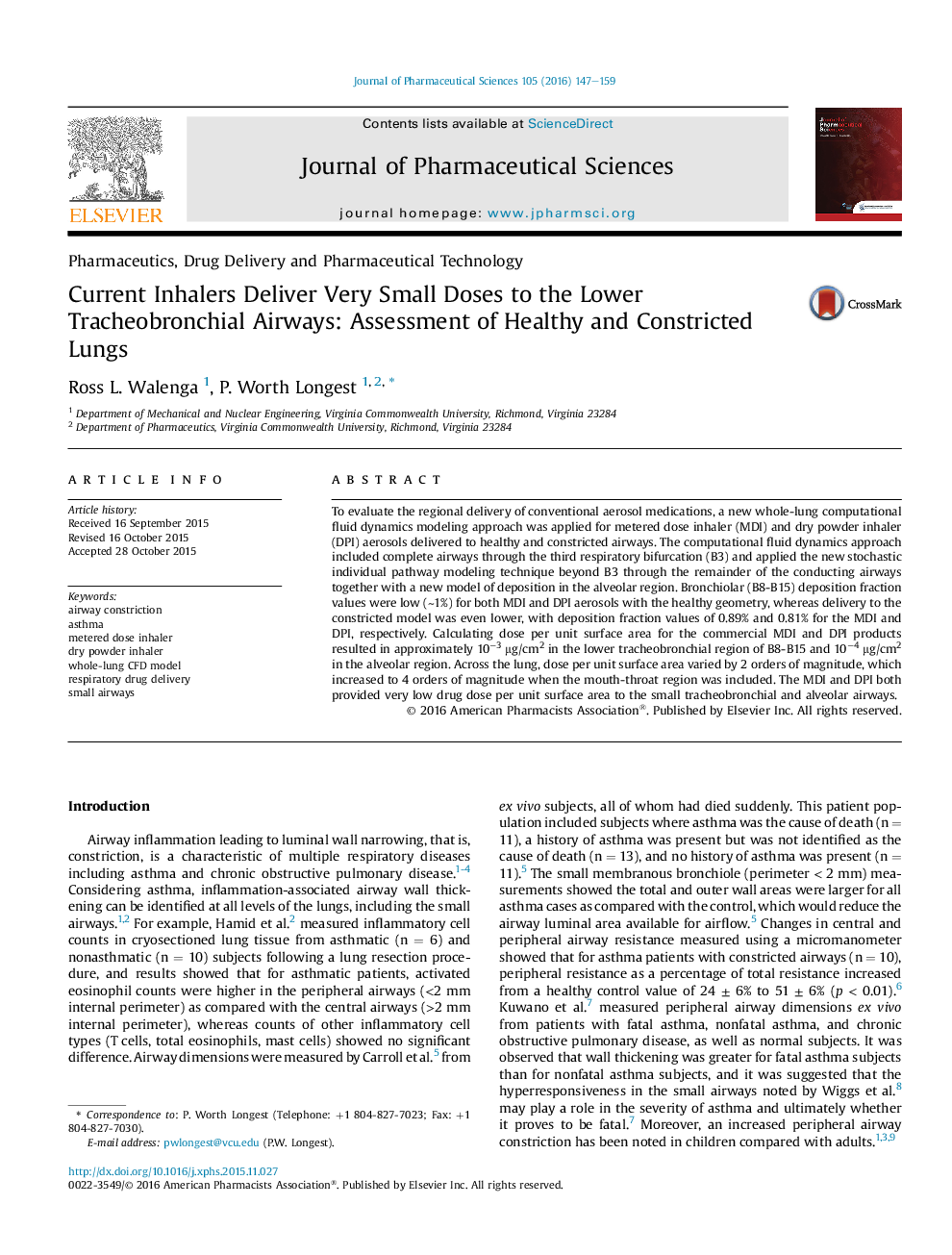| Article ID | Journal | Published Year | Pages | File Type |
|---|---|---|---|---|
| 2484448 | Journal of Pharmaceutical Sciences | 2016 | 13 Pages |
Abstract
To evaluate the regional delivery of conventional aerosol medications, a new whole-lung computational fluid dynamics modeling approach was applied for metered dose inhaler (MDI) and dry powder inhaler (DPI) aerosols delivered to healthy and constricted airways. The computational fluid dynamics approach included complete airways through the third respiratory bifurcation (B3) and applied the new stochastic individual pathway modeling technique beyond B3 through the remainder of the conducting airways together with a new model of deposition in the alveolar region. Bronchiolar (B8-B15) deposition fraction values were low (â¼1%) for both MDI and DPI aerosols with the healthy geometry, whereas delivery to the constricted model was even lower, with deposition fraction values of 0.89% and 0.81% for the MDI and DPI, respectively. Calculating dose per unit surface area for the commercial MDI and DPI products resulted in approximately 10â3 μg/cm2 in the lower tracheobronchial region of B8-B15 and 10â4 μg/cm2 in the alveolar region. Across the lung, dose per unit surface area varied by 2 orders of magnitude, which increased to 4 orders of magnitude when the mouth-throat region was included. The MDI and DPI both provided very low drug dose per unit surface area to the small tracheobronchial and alveolar airways.
Keywords
Related Topics
Health Sciences
Pharmacology, Toxicology and Pharmaceutical Science
Drug Discovery
Authors
Ross L. Walenga, P. Worth Longest,
